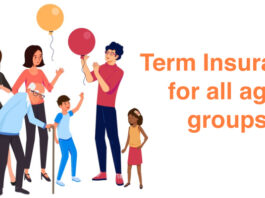
reduce student loans, Whether your college plans involve heading to campus or logging on for online learning, one thing is certain: You will need a way to pay.
If you’re looking for a student loan to help pay for the cost of college, federal Direct Loans usually offer the lowest interest rates.
Those with excellent credit, however, might be able to find lower rates with private student loans. Your financial information, including your credit history, can help you qualify for low-interest student loans.
Student loans aren’t created equal. Some are federal, some are private, some are designed to help financially needy borrowers, some offer lower rates or important borrower protections.
Also Read: 8 things you need to know about VA loan
If you have to take out loans to pay for college as most students do, it’s important to understand all your federal and private student loan options before you make any decisions.
Start with federal student loans
Federal loans are likely your best student loan option. They offer more generous borrower protections than private student loans do, such as the ability to switch to an income-driven plan if you can’t afford your monthly payments or to defer payments if you lose your job. Turn to private loans only after you’ve borrowed as much as you can in federal loans.
How to apply for a student loan in 5 steps
The best thing to do when you need to apply for a student loan is to get going as soon as you can. Federal student loans are borrowed on a first-come, first-served basis, so you’ll have the most access to financial aid the earlier you apply.
What’s more, the first time applying could be a bit overwhelming, so the more you can get ahead of the game, the easier the whole process will be to handle.

-
Compile all the financial information you’ll need to apply for a student loan
To obtain federal student aid, you’ll have to fill out the Free Application for Federal Student Aid, otherwise known as the FAFSA. As the name implies, the form is free and puts you in the running for financial aid for college, including federal student loans.
The FAFSA comes out in October each year, and you’ll need to apply the year before you’re planning on attending school — and then reapply each year until the year before you graduate.
Since there’s a lot of information on the form, it might be ideal to start compiling what you need in September. That way, you’ll have everything you need to apply the day the application comes out.
Here’s a list of some of the information you — or your parents — will need to get ready for the FAFSA:
Federal Student Aid (FSA) ID
Driver’s license number (optional)
Also Read: Things to know about best Refinance rates
Social Security number or Alien Registration Number
Federal income tax returns, plus records of untaxed earnings, including private financial aid
Statements for bank and investment accounts and other assets
List of up to 10 schools where you want your FAFSA submitted
Think you shouldn’t have to use your parents’ information on the FAFSA? Even if your parents don’t intend to help you pay for college, or if you live on your own, you might still be required to include them.
-
Use these forms to apply for student loans and free aid
As you can probably already see, the FAFSA is your only path to applying for federal student loans. If you don’t fill out your FAFSA, you can’t get federal student aid for college.
However, there’s a lesser-known form that might be of use to you. It’s called the CSS Profile, and it helps you obtain institutional aid from specific colleges. You can fill this out to see if some of the colleges on your wish list offer aid to supplement what you get from the federal government.
The CSS Profile also unlocks access not just to loans, but also to grants. That means you might be able to take out even fewer loans for college, reducing the amount of debt you have to pay back.
But the CSS Profile isn’t free — there’s an initial $25 fee, plus an additional $16 for every school you add to the list (although there are also fee waivers for those who qualify).
An advantage of the CSS Profile is that colleges you thought were out of your reach financially could suddenly become a real option if you qualify for their aid. In that case, the small fee for the application might be worth it in the end.
-
Fill out the FAFSA and CSS Profile online
When it comes time to fill out your FAFSA and — if you so choose — your CSS Profile, it might be easiest to do so electronically.
You or your parents can register for access to the FAFSA through fafsa.gov. After you’ve registered, the entire FAFSA can be filled out online, and even edited later if necessary. You can also apply via the FAFSA mobile app.
While you’re at it, you can skip some of the steps above by using the IRS Data Retrieval Tool to autofill much of the necessary financial information. However, it can’t hurt to gather the paperwork in advance anyway, just in case you run into issues using this tool.
And if you choose to fill out the CSS Profile, you can do so via College Board. To make sure your desired colleges are included; review the list of participating schools before you pay to fill out an application.
Also Read: Best Website Optimization Tips For You
-
Review your Student Aid Report
After you fill out your FAFSA, you’ll receive what’s called a Student Aid Report, showing you a summary of all the information you’ve entered. It can take from three days to three weeks to get this report. It’s important to review it for accuracy as soon as possible and edit your FAFSA if necessary.
Remember, aid is first-come, first-served — don’t delay fixing any errors that might exist on your FAFSA.
There might also be times when the school you included on your FAFSA selects you for verification. If that happens, you might simply need to provide extra documentation to confirm what you entered on your FAFSA. According to Federal Student Aid, this isn’t something to worry about — some schools might do this randomly, while others require it for everyone.
The most important thing is to provide whatever documentation you’re being asked for on-time, as missing the deadline could mean not getting any federal financial aid.
-
Await your financial aid award letter
After completing your FAFSA, you’ll receive a financial aid award letter from the colleges you listed on the form. The timing of these letters varies from college to college. However, if you’ve already received admissions acceptance from a college but no financial aid award letter, you can call its financial aid office to inquire about the letter’s status.
Your financial aid award letter will tell you everything you need to know regarding what you qualify for. If you qualify for grants or a work-study opportunity, for example, that information will be there. If you only received an offer for student loans, then you didn’t qualify for free aid.
Among the loans offered to you, you might see a mixture of subsidized and unsubsidized loans. Subsidized loans don’t accrue interest while you’re in school, so it’s best to use those first (but only after applying for scholarships and grants and accounting for work-study program earnings).
Remember that you don’t have to take all the aid offered to you. Scholarships and grants don’t have to be repaid, but student loans do. Only take what you need, even if accepting more assistance can afford you a nicer lifestyle.
After all, considering the years it’ll take to repay the loans and all the interest that will accrue on them, you might find that the alluring lifestyle in college wasn’t worth it. Cover your tuition, room and board, and books. Then use part-time work for other living expenses if you want to keep your student loan debt as low as possible.
Also Read: How To Use Microsoft PowerPoint To Improve Your Business
And if you received award letters from more than one school, make sure you compare aid packages before deciding on your next steps.
Why should you apply for federal student loans?
Federal student loans are an investment in your future. You should not be afraid to take out federal student loans, but you should be smart about it.
Federal student loans offer many benefits compared to other options you may consider when paying for college:
- The interest rate on federal student loans is fixed and usually lower than that on private loans—and much lower than that on a credit card!
- You don’t need a credit check or a cosigner to get most federal student loans.
- You don’t have to begin repaying your federal student loans until after you leave college or drop below half-time.
- If you demonstrate financial need, the government pays the interest on some loan types while you are in school and during some periods after school.
- Federal student loans offer flexible repayment plans and options to postpone your loan payments if you’re having trouble making payments.
- If you work in certain jobs, you may be eligible to have a portion of your federal student loans forgiven if you meet certain conditions.













